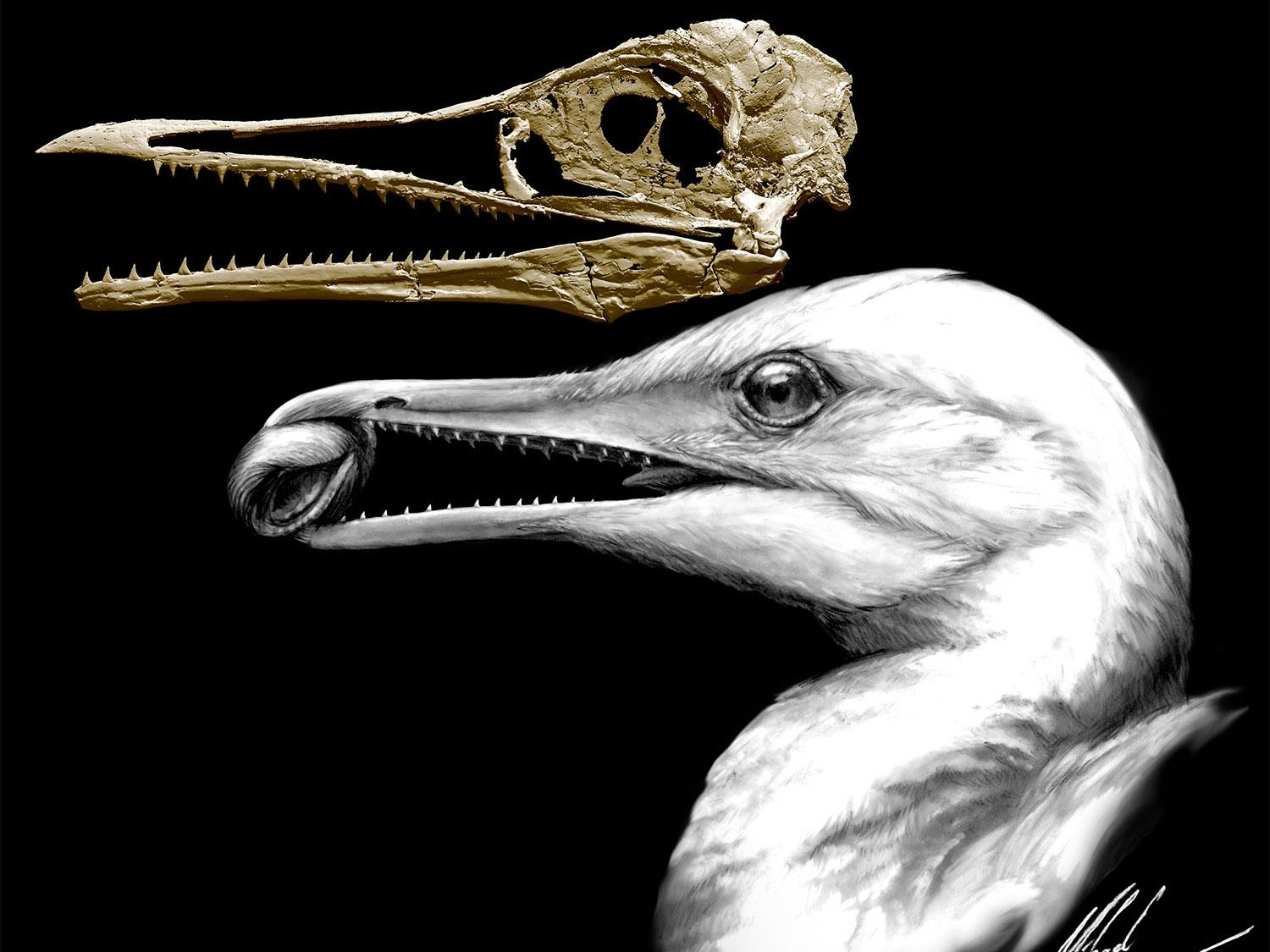First birds had full set of teeth, prehistoric fossils show
Gull-like creature with 'remarkably dinosaurian jaw' offers new insight into how birds evolved

Your support helps us to tell the story
From reproductive rights to climate change to Big Tech, The Independent is on the ground when the story is developing. Whether it's investigating the financials of Elon Musk's pro-Trump PAC or producing our latest documentary, 'The A Word', which shines a light on the American women fighting for reproductive rights, we know how important it is to parse out the facts from the messaging.
At such a critical moment in US history, we need reporters on the ground. Your donation allows us to keep sending journalists to speak to both sides of the story.
The Independent is trusted by Americans across the entire political spectrum. And unlike many other quality news outlets, we choose not to lock Americans out of our reporting and analysis with paywalls. We believe quality journalism should be available to everyone, paid for by those who can afford it.
Your support makes all the difference.Scientists have pieced together the skull of a toothed bird that they say illustrates the pivotal period in history in which dinosaurs transitioned into modern-day avians.
Known as Ichthyornis dispar, the seagull-like creature lived in North America about 86 million years ago and was first discovered in the 1870s.
The species, which prospered along the warm, shallow sea which once divided the continent, drew the attention of 19th century naturalists including Charles Darwin, who said its toothy jaw offered important insights into evolution.
However, for more than a century the only known specimens of the bird’s skull were flattened or fragmented fossils, limiting researchers’ knowledge of the species.
Now, for the first time, a team led by scientists at Bath and Yale universities have produced a clear 3D picture of the bird’s head, using a complete skull discovered in 2014 and two new cranial specimens which laid undiscovered in museum collections for years.
The bird had a surprising blend of dinosaur and avian features, a discovery that researchers said offered new insight into how modern birds developed beaks.
“Right under our noses this whole time was an amazing, transitional bird,” said Yale paleontologist Bhart-Anjan Bhullar. “It has a modern-looking brain along with a remarkably dinosaurian jaw muscle configuration.”
It has long been known that birds evolved from small, feathered dinosaurs.
The earliest known bird-like creatures, such as Archaeopteryx, which lived 150 million years ago, were substantially different from modern avians. Although they had wings, their skulls more closely resembled those of dinosaurs.
Ichthyornis, unlike Archaeopteryx, is thought to have been a strong flier. Its streamlined body was simplified and adapted for flight like modern birds.
“Despite the modernity of its body and wings, it retained almost a full complement of dinosaurian teeth, and it had a strong bite with large, dinosaurian jaw muscles,” said Mr Bhullar. “However, it perceived its world and thought like a bird, with a bird’s enormous eyes and expanded, modern-looking brain.”
While primitive birds such as Confuciusornis, which lived 125 million years ago, had beaks, the small one sported by Ichthyornis is the first known to have modern attributes like a “pincer tip” for grasping, pecking and fine manipulation.
“Its sharp teeth probably would have assisted in holding onto slippery marine prey, while the incipient beak at the tips of its jaws probably would have allowed it to manipulate objects with fine dexterity such as modern birds can do, and preen its feathers,” said University of Bath paleontologist Daniel Field.
Ichthyornis had a two-foot wingspan and probably ate fish and shellfish. It shared the skies with flying reptiles called pterosaurs at a time when dinosaurs dominated the land.
Toothed birds vanished along with the dinosaurs and many other species after an asteroid impact 66 million years ago.
Ichthyornis fossils were first written about by Yale paleontologist Othniel Charles Marsh in the 19th century and were later cited by Darwin as strong support for his theory of evolution.
The Yale and Bath researchers used CT scans to analyse the newly discovered specimens. Their study is published in the journal Nature.
“The fossil record provides our only direct evidence of the evolutionary transformations that have given rise to modern forms,” said Mr Field. “This extraordinary new specimen reveals the surprisingly late retention of dinosaur-like features in the skull of Ichthyornis - one of the closest-known relatives of modern birds from the Age of Reptiles.”
Join our commenting forum
Join thought-provoking conversations, follow other Independent readers and see their replies
Comments